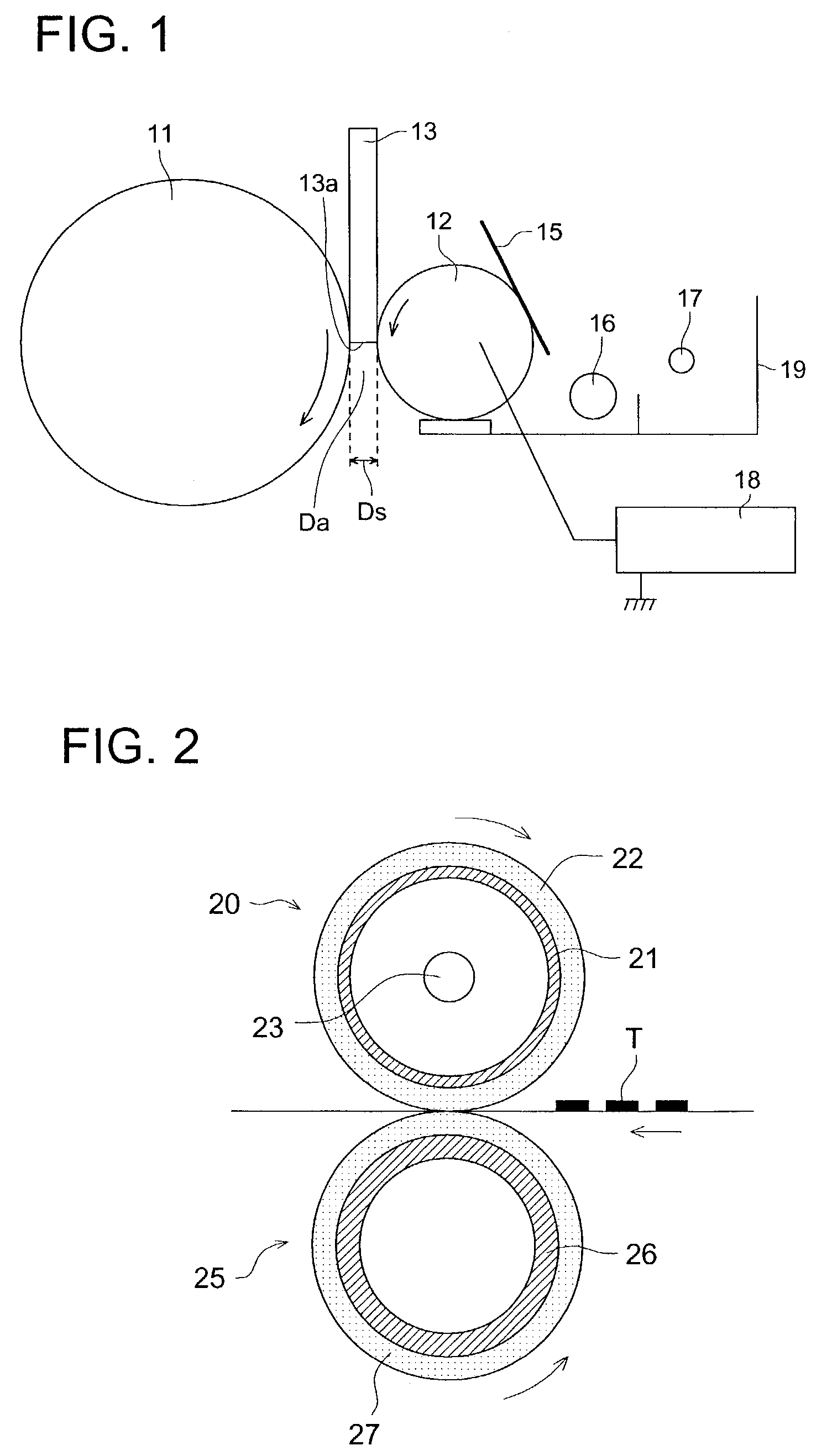Toner particle having a hardnes of 6.0 to 24.0 mN and a circularity of 0.92 to 0.99
a technology of toner and hardness, applied in the field of toner and image forming method, can solve the problems of difficult high transferring performance and developing performance, difficulty in obtaining high quality images, and molten toner, and achieve excellent fixing performance and anti-contamination performance.
- Summary
- Abstract
- Description
- Claims
- Application Information
AI Technical Summary
Benefits of technology
Problems solved by technology
Method used
Image
Examples
preparation example 2
of Resin Particles
[0218]Latex 2CIO was obtained in the same way as Preparation Example 1 of Resin Particles, except that an amount of the initiator, n-octyl-3-mercapto propionic acid ester, in the first step polymerization was modified to 6.4 g and an amount of the initiator, n-octyl-3-mercapto propionic acid ester, in the second step polymerization was modified to 7.7 g. The latex of composite resin particles composed of a core, an inter layer and an outer layer in each particle, was obtained and designated as Latex (2CIO).
[0219]The polymers composed of composite resin particles composing the latex 2CIO were confirmed to have weight average particular size of the composite resin particles was 118 nm and peaks at molecular weight of 46,000 (core), 52,000 (inter layer) and 18,000, (outer layer).
preparation example 3
of Resin Particles
[0220]Latex 3CIO was obtained in the same way as Preparation Example 1 of Resin Particles, except that an amount of the initiator, n-octyl-3-mercapto propionic acid ester, in the third step polymerization was modified to 8.2 g. The latex of composite resin particles composed of a core, an inter layer and an outer layer in each particle, was obtained and designated as Latex (3CIO).
[0221]The polymers composed of composite resin particles composing the latex 2CIO were confirmed to have weight average particular size of the composite resin particles was 118 nm and peaks at molecular weight of 38,000 (core), 78,000 (inter layer) and 22,000, (outer layer).
preparation example 4
of Resin Particles
Example of Preparation of Comparative Resin Particles
Preparation of Latex 4CIO
(1) Preparation of Core Particle (The First Stage Polymerization)
[0222]A dispersion of resin particles Latex 4C was prepared in the same way as Preparation Example 1 of Resin Particles except that a monomer mixture solution consisting of 70.1 g of styrene, 19.9 g of n-butyl acrylate, 10.9 g of methacrylic acid and 7.2 g of n-octyl-3-mercapto propionic acid ester was modified to a monomer mixture solution consisting of 70.1 g of styrene, 19.9 g of n-butyl acrylate and 10.9 g of methacrylic acid in the first step polymerization.
(2) Forming an Inter Layer
[0223]Latex 4CI was prepared in the same way as Preparation Example 1 of Resin Particles except that an amount of Exemplified Compound 19 was modified to 98.0 g and Latex 4C was employed in place of Latex 1C. Thus resin particles having core and an interlayer containing a releasing agent Exemplified Compound 19 was obtained. The resulting la...
PUM
 Login to View More
Login to View More Abstract
Description
Claims
Application Information
 Login to View More
Login to View More - R&D
- Intellectual Property
- Life Sciences
- Materials
- Tech Scout
- Unparalleled Data Quality
- Higher Quality Content
- 60% Fewer Hallucinations
Browse by: Latest US Patents, China's latest patents, Technical Efficacy Thesaurus, Application Domain, Technology Topic, Popular Technical Reports.
© 2025 PatSnap. All rights reserved.Legal|Privacy policy|Modern Slavery Act Transparency Statement|Sitemap|About US| Contact US: help@patsnap.com



